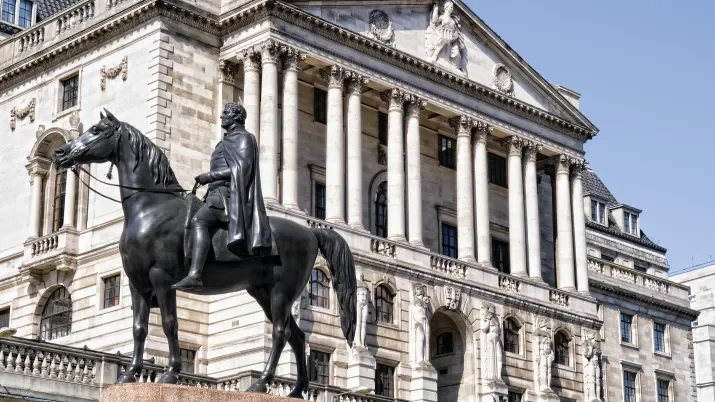Hitting the wall: What next for high yield default rates?
In a recent speech, Thomas Barkin, president of the Richmond Federal Reserve, called any (potential) upcoming recession "the most predicted recession ever", contextualising the fact businesses have had over 18 months to prepare for a downturn in which they have slowed the pace of hiring, streamlined costs, managed inventory levels, and deferred investment.
Default rates in corporate credit markets have, for many of the reasons just described, remained relatively subdued in the face of a significant tightening in financial conditions. One of the main reasons they have, however, is the fact that issuers took advantage of the low-rate environment in the past cycle (and in 2021) to address their maturity walls. Companies were able to extend their debts at very attractive rates.
The question we and the market now pose, is what happens to default rates as that maturity wall starts to creep closer? Is the long and variable lag of monetary policy just taking its time to weave its way through credit markets, or should we expect a reasonably benign default environment even after a record amount of hikes in the Eurozone?
According to research from LevFin Insights, there is just under €80bn of 2025 maturity bonds that needs to be refinanced, accounting for ~19% of the European high yield index. Companies usually refinance at least 12 months before maturity, before bonds come "current", to avoid any ratings pressure that might come with leaving their debt outstanding until the last minute. These 2025 maturities therefore are most likely to be refinanced in 2024.
Some companies have pro-actively succeeded in doing so, even at the lower end of the ratings spectrum - PureGym and Iceland are two recent examples in the single B space - but 2023 supply has so far been limited after a subdued 2022, and the primary market will become an increasingly important tool for high yield companies as we move through the next year.
Although Barkin’s comments were obviously in the context of the US economy, his words provide an accurate description of the situation for firms in Europe and the UK as well. As he quite rightly points out, companies have had a while to lay the groundwork for a refinancing, and a key point that we think underlines our view on default rates is the optionality that companies now have.
We have, for starters, a strong banking sector. After a decade (plus) of recapitalising bank balance sheets, banks are in a good place to provide support to their corporate partners, particularly relative to 2008. This can take the form of secured bank loans (something we have seen in recent months as real estate companies tender for public high yield bonds while refinancing secured debt through the banks) or increasing credit lines via revolving facilities.
Interestingly though, the banks are no longer just competing. The growth in private credit has been meteoric in recent years, reaching approximately $1.5tn in a recent estimate by the FT. While there are dangers of rapid credit growth in a largely unregulated market, there is no doubt that this provides optionality for companies in public credit. We have seen this in action over the past 24 months, with the likes of Morrisons, the supermarket, issuing a substantial amount of private debt after high yield markets closed in the early stages of 2022. This is a trend we would expect to continue, driving private credit players to fill recently raised credit funds, while also driving M&A teams at the large banks to be proactive in competing with that flow of credit, particularly after a long 2021/2022 of meagre M&A advisory fees.
Finally, we also have a sponsorship base that has raised cash at record levels. There have been multiple €20bn+ PE fund raises this year. While we expect much of this to be used on large LBO type deals it points us to a relatively supportive sponsor environment, raising the possibility of equity injections to get tricky refinancings over the line.
Underpinning this optionality is a maturity wall that looks less daunting than at first glance. Of the €77bn that needs to be refinanced by the end of 2025, ~70% is rated BB, the highest rating in the high yield market. These are the issuers that have the strongest balance sheets and best access to capital markets. While primary bond markets do close at the BB level from time to time, these companies tend to be larger and have more diversified funding profiles. Refinancing in this segment should not be an issue under reasonable scenarios with current information. Of the other 30%, approximately 25% of it is made up of single B companies, where the risk of default is higher. The market, however, is comfortable with the vast majority of these. This is evidenced by the fact that the average cash price of the 2025 single B cohort is ~95, according to Levfin Insights, slightly higher than the 93.5 average of the BB cohort. The market, like us, is already doing the work on these names, and when we underwrite them now, we are not underwriting them with coupons of 5%, we are in many cases underwriting them with coupons of 10%. If companies can generate free cash flow after a substantial increase in coupon, the market will generally provide capital to that company.
The last cohort of 2025 maturities come in the form of CCC-rated paper, the lowest quality part of the credit spectrum. These names are most "at-risk", and a larger percentage of the CCC-rated index is trading at distressed cash prices (25% of the 25/26 maturities trade below 50). We can, however, take comfort from the fact that it is a relatively small part of the overall high yield index. If all 2025 maturity CCC-rated paper was to default, the overall default rate for the European high yield market would increase by 1.1% (given ~4.6bn of maturities for a market that is just over 400bn). We would expect, however, many of these names to refinance next year, although we acknowledge that, for obvious reasons, they are more vulnerable to primary markets closing.
Ultimately, while we expect the default rate to remain subdued relative to previous default cycles, particularly 2008 and 2000, we do expect it to increase, most likely to above levels we saw in 2020 (~3.5% in Europe), and significantly above the longer-term average of 1.8% (according to JP Morgan estimates). Returns at index level could still be robust, given the most at-risk names are trading at distressed levels already. In addition, given the yields on offer and the relatively short duration in the sector, bonds have very strong credit break-even protection, but we should be cognisant of the fact that subdued default expectations are currently underpinned by still-strong earnings growth, which we would expect to weaken in a 2024 recession (but our base case is for that recession to be relatively mild).
In conclusion, although the maturity walls in European high yield are not small in the near term, we do believe that the fact most of these are in the BB space, along with the fact that issuers have been preparing for addressing these maturities for some time, will result in default rates that are not extraordinarily high. This is a very important factor in assessing how attractive the high yield sector is from a relative value point of view, but it is not the only one. We have in fact maintained a more cautious view on high yield on a relative value basis in the last few quarters. We do not necessarily think high yield spreads are extremely tight, but there are other parts of credit markets that do look more attractive. In particular, financials and CLOs continue to trade well wide of their historic means and we deem the default rate risk to be lower than in high yield.



